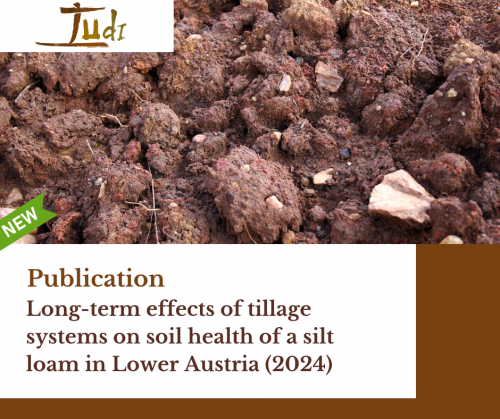TUdi article: Long-term effects of tillage systems on soil health of a silt loam in Lower Austria
Published in Soil and Tillage Research, and available in the TUdi library, you can find the article “Long-term effects of tillage systems on soil health of a silt loam in Lower Austria”, written by Marton Toth, Christine Stumpp, Andreas Klik, Peter Strauss, Bano Mehdi-Schulz, Gunther Liebhard and Stefan Strohmeier.
Tillage, the agricultural preparation of soil by various mechanical processes, affects soil structure. Although the practice of tillage is widely used in agriculture, its long-term implications on soil health are complex and require better understanding. The study at hand evaluates soil physical, chemical and biological effects of 3 different tillage practices: conventional tillage (CT), mulch tillage (MT), and no-till (NT).
A long-term experiment in Mistelbach, Lower Austria, was launched in 1994 and comprehensively sampled in 2002 and 2021. To evaluate tillage impacts over the two decades of the experiment, soil health indicators in the 0-20 cm soil depth (conventional ploughing layer) and below 20 cm were assessed. With the use of the Soil Quality Index (SQI), a “Soil Management Assessment Framework” (SMAF) procedure was applied to assess and compare soil quality.
The study found overall quality improvements in all 3 tillage experiments over time, with the conservation practices (MT and NT) in particular enhancing soil quality, predominately soil organic carbon (SOC) and soil physical indicators (e.g. water holding capacity, coarse pores). The study confirms that soil organic carbon in the 0–20 cm layer significantly increased under no-till compared to conventional tillage. Conservation agriculture practices, such as mulch tillage (MT) and no-till (NT) have led to increased aggregate stability (the measured ability of soil to hold together and maintain structure) and water-holding capacity. These demonstrated benefits for soil health will further support agricultural methods that maintain productivity while advancing climate change mitigation efforts in temperate regions.
